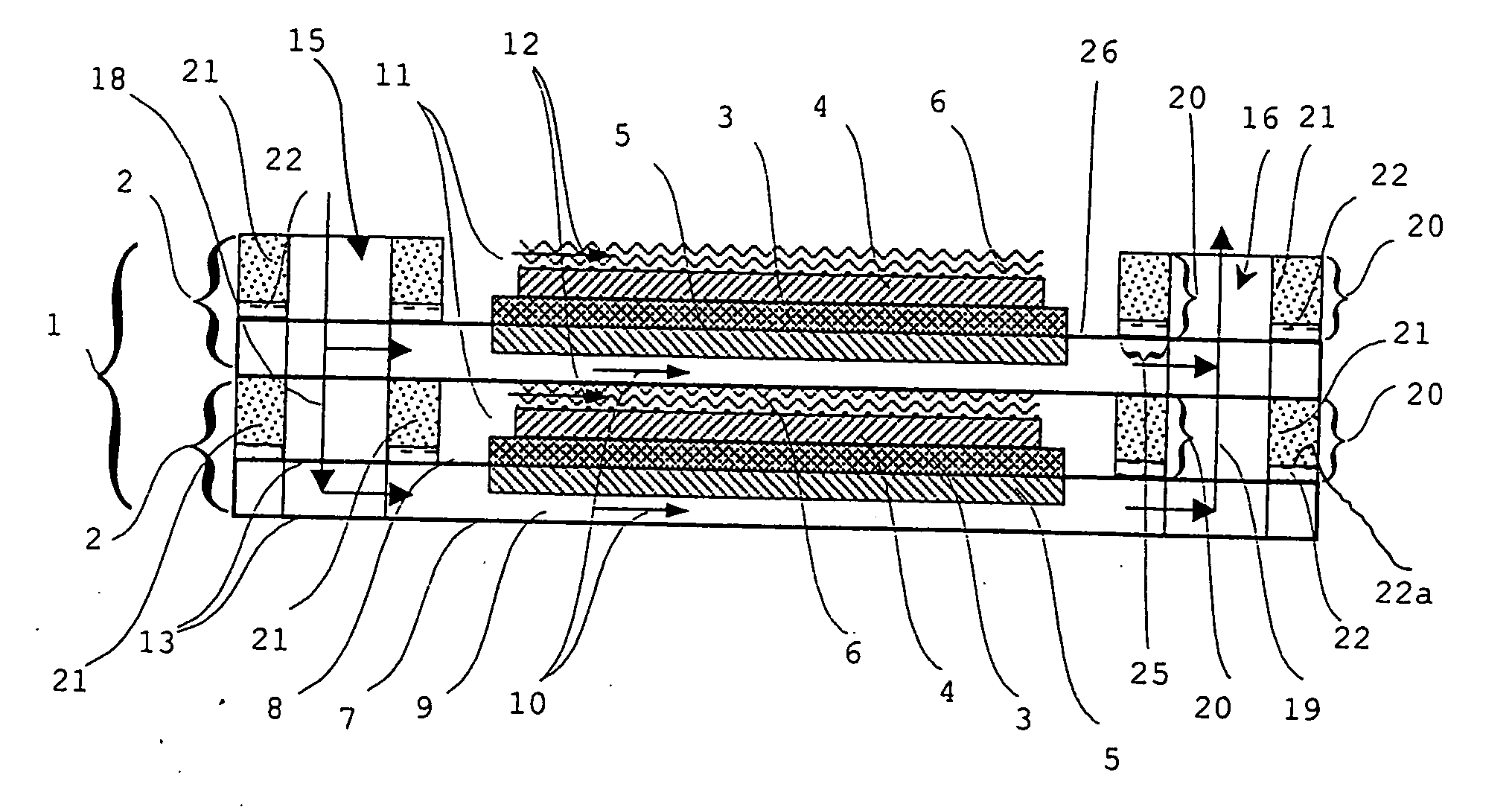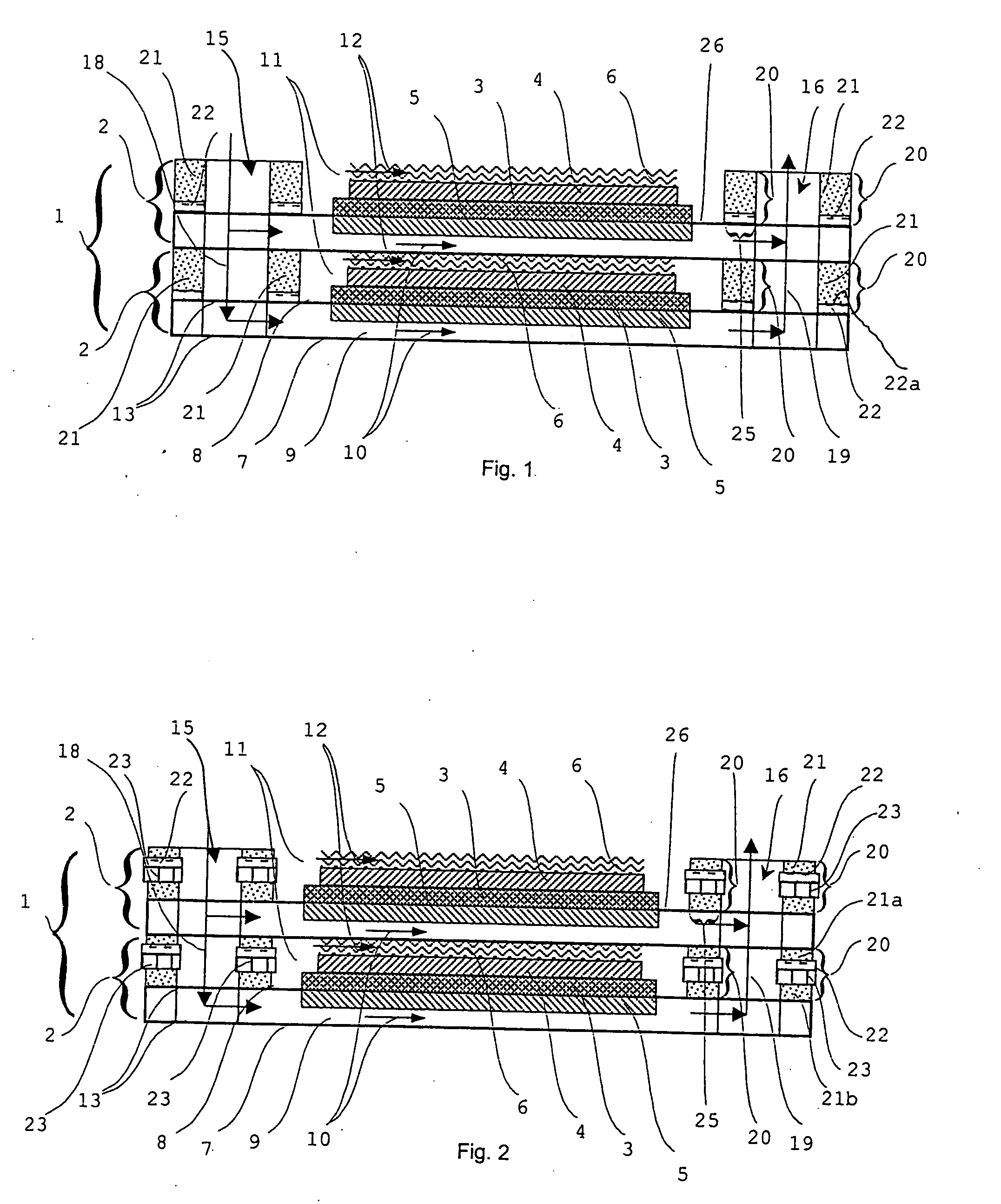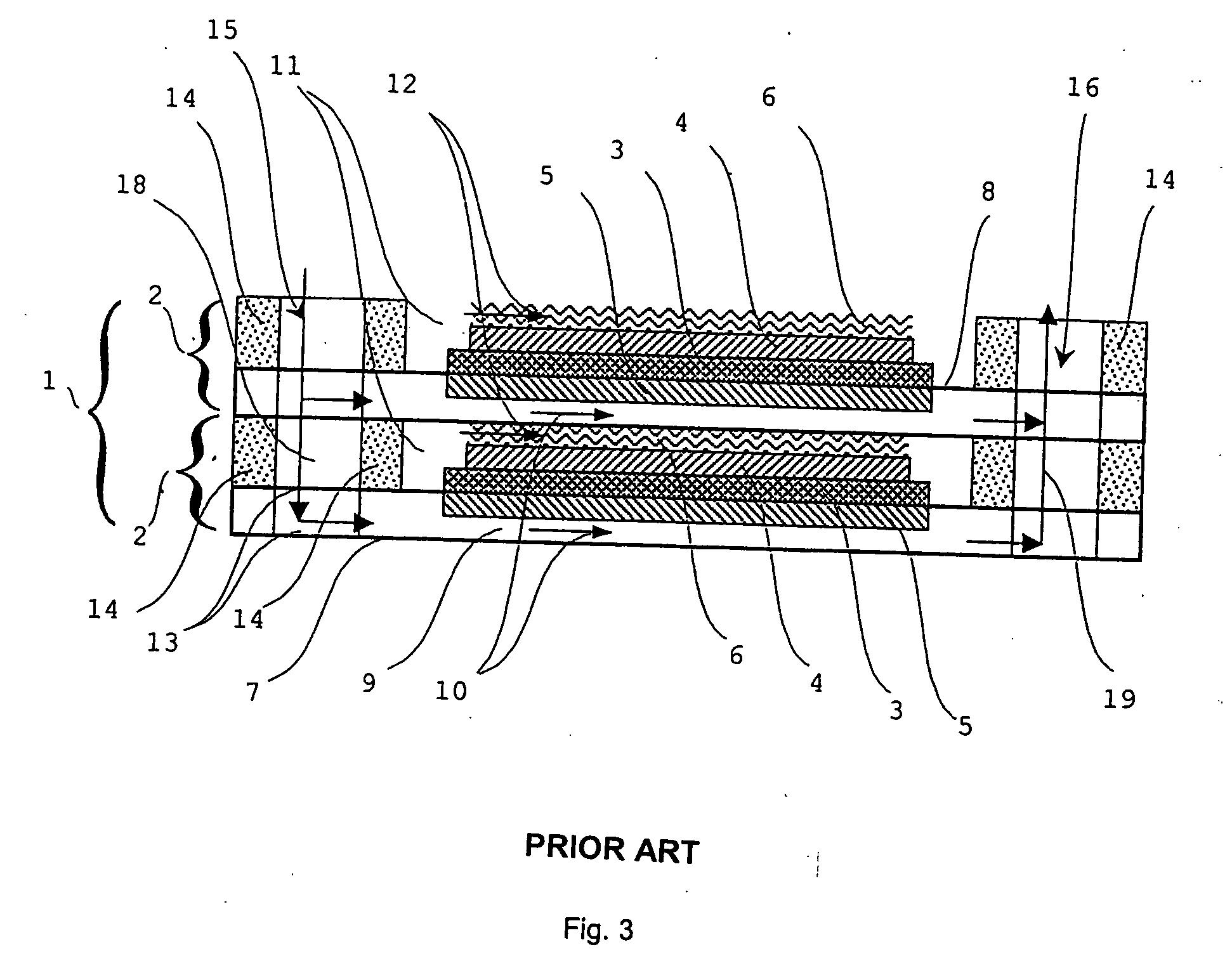Seal construction for a fuel cell electrolyser and process for making a fuel cell with same
a technology of electrolyte and sealing structure, which is applied in the direction of cell components, final product manufacturing, sustainable manufacturing/processing, etc., can solve the problems of unsatisfactory resolution of the sealing effect, reduce the electric resistance of the sealing material, and achieve simple and cost-effective mounting, facilitating and particularly more process-secure
- Summary
- Abstract
- Description
- Claims
- Application Information
AI Technical Summary
Benefits of technology
Problems solved by technology
Method used
Image
Examples
first embodiment
[0037] According to the sealing structure 20 according to the invention, the latter has a sealing layer 21 and an insulating layer 22. The insulating layer 22 consists of a metal oxide, particularly an aluminum oxide (Al2O3) which, in a particularly preferred manner, is constructed in the so-called z,900 -modification. Al2O3 in the z,900 -modification has a particularly high electric resistance and an excellent corrosion stability in oxidizing as well as in reducing media.
[0038] In an embodiment corresponding to FIG. 1, the insulating layer 22 is arranged in all required sealing areas 25 between two neighboring individual fuel cells 2 on a top side 26 of one of the bipolar plates 7, 8, which top side 26 faces an oxidation space 11. The arrangement of the sealing layer 21 on a free surface of a bipolar plate 7, 8 is advantageous particularly when the bipolar plates 7, 8 are produced from a steel material with a high aluminum content (>2%). In this case, the aluminum oxide insulating ...
second embodiment
[0043] In the sealing structure of the invention corresponding to FIG. 2, the insulating layer 22 is arranged on a carrier layer 23, in which case a first sealing layer 21a is arranged between the insulating layer 22 and a neighboring separator plate 7, and a sealing layer 21b is arranged between the carrier layer 23 and its neighboring separator plate 8. Thus, in this embodiment, the sealing structure 20 has at least four layers, having at least one carrier layer 23, at least one insulating layer 22 and at least two sealing layers 21a, 21b.
[0044] In this embodiment, the insulating layer 22 is constructed of the same material as the insulating layer 22 of an embodiment corresponding to FIG. 1. The sealing layers 21a, 21b are preferably constructed of the same material as the sealing layer 21 of an embodiment corresponding to FIG. 1. The carrier layer 23 is, for example, a steel plate with a high aluminum content (>2%). In the case of such steel plates, at temperatures above 900° C....
PUM
| Property | Measurement | Unit |
|---|---|---|
| temperature | aaaaa | aaaaa |
| temperature | aaaaa | aaaaa |
| temperatures | aaaaa | aaaaa |
Abstract
Description
Claims
Application Information
 Login to View More
Login to View More - R&D
- Intellectual Property
- Life Sciences
- Materials
- Tech Scout
- Unparalleled Data Quality
- Higher Quality Content
- 60% Fewer Hallucinations
Browse by: Latest US Patents, China's latest patents, Technical Efficacy Thesaurus, Application Domain, Technology Topic, Popular Technical Reports.
© 2025 PatSnap. All rights reserved.Legal|Privacy policy|Modern Slavery Act Transparency Statement|Sitemap|About US| Contact US: help@patsnap.com



